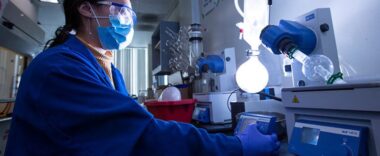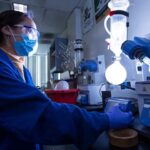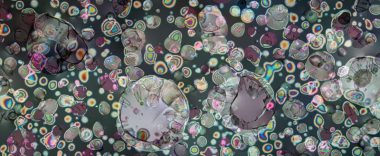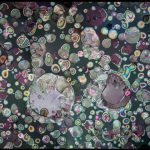Biological science major Julia Teeple, a scholar in the Southern California Ecosystems Research Program, was fascinated when she saw whale sharks feeding in their natural habitat during a study abroad course in Baja, Mexico. She is now investigating how the tooth structure of these filter-feeding sharks enhances filtration efficiency, with possible implications for creating bio-inspired filters for human use. Recent marine biology graduate Jacob Javier also documented these biological structures in baby and adult whale sharks to better understand their filtration with hopes of making bio-similar filters that could be used for water treatment and more. Both students were advised by Misty Paig-Tran, assistant professor of biological science, whose research focuses on filtration mechanics in large fish.
For the first time in its 31 years, the Mathematics Intensive Summer Session, known as Project MISS, was held virtually. Directed by David L. Pagni, professor of mathematics, and taught by Cal State Fullerton math graduates, the 2020 session had 72 high school student participants, representing 42 schools and 40 different cities across the region. Project MISS 2020 alumni instructors, who all earned bachelor’s degrees in mathematics from Cal State Fullerton and completed the teaching credential program, were Selena Alamillo Ramirez, Rachal Hasson, Jorgelina Razzari Corral, MacKenzie Sheppard, and Megan Tanielu. Tutors, who earned a CSUF bachelor’s degree in mathematics and either completed or are currently in the teaching credential program, were graduates Maria Buitron, Jovanna Carrera, Patricia Pintor, and Jessica Rosete, and undergraduate Edith Carrera. Instructors and tutors used imaginative ways to engage students with online notebooks, games, and guest speakers on Zoom.

While recent geological sciences graduate Priscilla Martinez didn’t get to experience long days of hiking in the field with her peers at the 2020 “Geology Field Camp,” she still gained valuable geoscience experience as a part of last summer’s first-ever virtual program. Martinez and 12 other upper-division geology students had opportunities to collect digital data and interpret geologic events in different field locations without having to physically visit the sites. For the course, they used various software tools, such as Google Earth Pro, to digitally map rock formations and other geological features in places like Frying Pan Gulch and Block Mountain, near Dillon, Montana, and studied geologic events that occurred from 2.6 million years ago to the modern day in Owens Valley, east of the Sierra Nevada mountains. Martinez was awarded a 2020 J. David Lowell Field Camp Scholarship from the Geological Society of America to attend summer field camp. For the virtual course, imaginative instructors Sinan Akçiz and Kathryn Metcalf, both assistant professors of geological sciences, created projects similar to those that students might be tasked with while working at a geology consulting company.
Physics major Teresita Ramirez Aguilar and a team of students and faculty members in Cal State Fullerton’s Nicholas and Lee Begovich Center for Gravitational-Wave Physics and Astronomy contributed to the latest detection and analysis of more gravitational waves that the LIGO (Laser Interferometer Gravitational-Wave Observatory) and European Virgo detectors have observed. Their research appears in the Oct. 28, 2020, announcement by LIGO and Virgo of a new catalog that contains 50 gravitational-wave detections over the past five years, including 39 new signals from black hole or neutron star collisions discovered between April 1 and Oct. 1, 2019. The supercomputer animation that Ramirez Aguilar helped create with her faculty adviser Geoffrey Lovelace, associate professor of physics, for the new catalog is a visualization of 38 confirmed merging black holes that LIGO and Virgo have observed since 2015.
Cal State Fullerton paleontologists have identified three new walrus species discovered in Ocean County. Estimated to be 5 million to 10 million years old, one species has semi-tusks, while the others don’t have tusks, and all predate the evolution of the modern Arctic walrus’s long ivory tusks. Geological sciences graduate Jacob Biewer conducted research on the tusk evolution of walruses for his master’s thesis. With his research adviser James F. Parham, associate professor of geological sciences, and Jorge Velez-Juarbe, an expert in marine mammals at the Natural History Museum of Los Angeles County, Biewer published a tusk evolution study in the Journal of Vertebrate Paleontology in November 2020.









